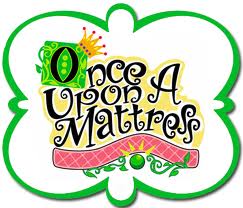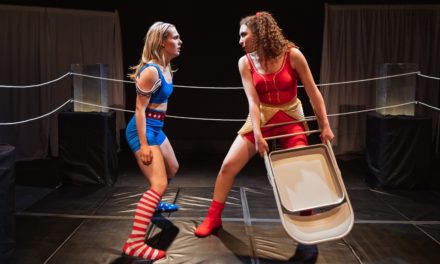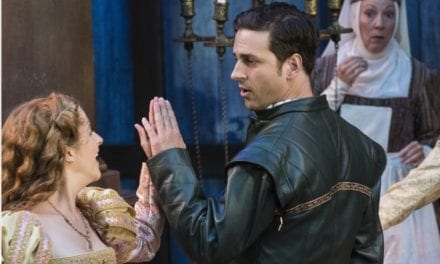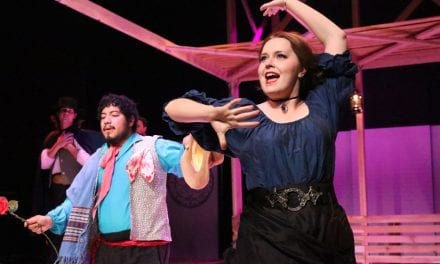LEHI — Once Upon a Mattress is a musical comedy with music by Mary Rodgers, lyrics by Marshall Barer and book by Jay Thompson, Dean Fuller, and Marshall Barer. It is loosely based on Hans Christian Andersen’s “The Princess and the Pea” and tells the story of a kingdom from long ago where Prince Dauntless is looking for a bride. A dozen girls have already been tested and rejected as unsuitable by his mother, the unpopular Queen Aggravain, who dominates the kingdom and her mute husband, King Sextimus. The marriage law of the land states “no one may wed until Dauntless shares his marriage bed,” and the lords and ladies of the court are distressed, hence the conflict begins. Chief among the distressed are Lady Larken and Sir Harry, who it seems, are soon going to have a new arrival whether they are married or not. The Queen does not want her son to marry, as it would force her to give up her power in the kingdom. Princess Winnifred, a princess in the nearby kingdom swims the moat in her eagerness to meet the prince and fill the position as heir to the throne.
Lehi City Arts Council’s production of Once Upon a Mattress encompassed a lot of new comers to the stage in the real sense of community theatre. It was nice to see so many people volunteer their time and venture in to support their theater’s summer musical. However, with so many green actors on the stage, it made it a real challenge for directors (Robert Brian Smith and Melissa Aaron Higley) to create a synergy within its ensemble or a believable world. The actors’ portrayal of their characters was so exaggerated and they came across as caricatures rather than real people, especially Sir Harry (Tanner Perelle), Queen Aggravain (Anne-Marie DeOllos) and Prince Dauntless (Mark Nott). In general, most of the scenes and musical numbers were flat and on one level with very little variation occurring.
For musical theatre numbers to be effective, there must be an array of emotions and dynamic changes to tell the story. Unfortunately, this range of emotions were were largely missing in most numbers. For example, in Princess Winnifred’s (Deb Nott) “Shy” there was no real progression in the storyline, and rather she played a “state of being over and over,” rather than finding new emotions to convey. So I got everything she had to say in the first 15 seconds of the song, but this number was several minutes long. Likewise, Tamery Merkley (as Lady Larken) and Perelle’s duets “In a Little While” and “Yesterday I Loved You” were on one level the entire time. I got that they were in love, but what specifically made them love each other? What new emotions, information, or discoveries could be revealed in these songs to tell the audience more about their characters and make them real? These problems made the show less exciting and difficult to get engrossed in the story.
The directors did not utilize the stage very well. Most of the blocking was simply the actors coming to the center for every scene. There were few levels used, and the pictures were not very interesting to look at in the group numbers. A greater variety in the use of the stage would have helped to create a more interesting show and added some dimension to the many scenes. All of the scenes were basically played on one plane where the actors moved right and left, yet this was a thrust stage with the audience on three sides, and playing scenes more on the diagonals and exploring a variety of different spaces would have helped created a visually more interesting production. I also wish that the directors could have helped speed up the pacing of the show, a lot of the humor was lost due to slow pacing or indulgent moments, and the scene changes were long and also contributed to the choppy feel to many of the scenes.
The ensemble members frequently upstaged the main performers by mugging and unnecessary stage business that drew focus from the storyline. This was notable in the group scenes such as “The Swamps of Home” and “An Opening for a Princess.” Other problems included a failure by the actors to listen and respond to their other cast mates. For the most part it felt as if actors were just saying lines or moving from place to place on the stage as the director or choreographer instructed, rather than motivate the movement so it seemed natural and believable. This was most evident when actors would react early to things that hadn’t happened yet, or when certain actors would be mouthing words along with other actors as to anticipate what their next line would be. The only exception to this was Tim Merkley, who played the jester. He was more natural in his line delivery and made a greater variety of choices most notable in his solo “Very Soft Shoes.” He also listened and responded better to his fellow actors on stage and moved with purpose. This is the type of detail that was needed from the majority of the other actors.
The singing by the leads and ensemble (under direction of Andrea Chapman) was decent in the sense that most actors were on pitch and got their words. But the numbers were not very energized or exciting, and many untrained voices made it difficult for the numbers to blend or the solos to really soar. Max Durrant as the minstrel was the exception, as his well-trained voice was pleasant to listen to in his solo “Many Moons Ago.”
The set design (under the direction of Jerry Hatch, Robert Brian Smith, and Max Durrant) was the most impressive element of the production. The entire theater was transformed into a 14th century kingdom, with bright colors appropriate for the style of Once Upon a Mattress. The large stack of mattresses and king’s throne were especially beautiful and an ambitious undertaking for the small space. The costumes (under the deign of Lynnea Kartchner) were also gorgeous and brighten the stage and helped bring out the various characters’ personalities.
For the local residents in Lehi or the surrounding areas, I would recommend this show as a fun musical comedy you can bring the kids to. The intimate space makes the action very up close and there isn’t a bad seat in the house. However, outside of Lehi, this show is probably not worth the drive as there are significantly stronger productions in closer communities throughout the state.






